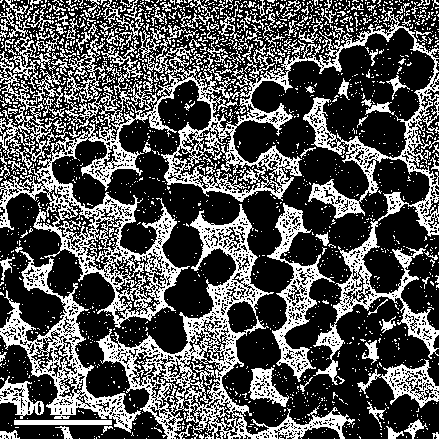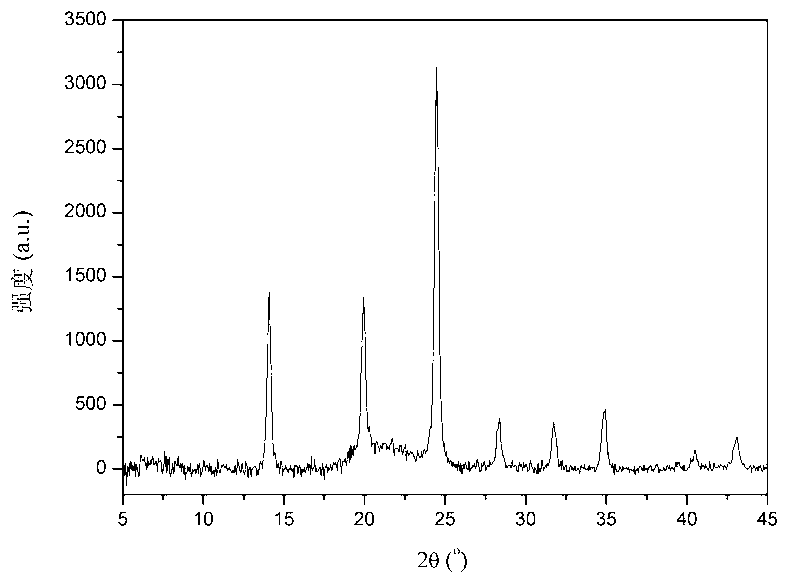Microwave-assisted method for preparing magnetic resonance imaging contrast agent
A magnetic resonance imaging, microwave-assisted technology, applied in the field of nanomaterials, can solve the problems of limited further research, high toxicity of materials, poor monodispersity, etc., and achieve the effects of good water solubility and monodispersity, easy operation, and small particle size.
- Summary
- Abstract
- Description
- Claims
- Application Information
AI Technical Summary
Problems solved by technology
Method used
Image
Examples
Embodiment 1
[0026] Add 100 mg of nano-zeolite SOD from which the organic template has been removed to 10 mL of 0.04 M GdCl 3 solution; 2 drops of 0.1 M HCl was added dropwise to adjust the pH of the system to 5.5, and the system was homogenized by ultrasonication.
[0027] Seal the system and transfer it to a microwave reactor, set the irradiation temperature to 140 o C, the irradiation time is 10 minutes, and the maximum irradiation power is 100 watts. After the reaction, cool to room temperature, centrifuge the product at 16000 r / min, discard the supernatant, and wash repeatedly until the supernatant is dripped with silver nitrate solution and no white flocculent precipitate appears.
Embodiment 2
[0029] Carry out the experiment with the method similar to embodiment 1, but change the microwave irradiation temperature into 160 o c.
Embodiment 3
[0031] Carry out the experiment with the method similar to embodiment 1, but change the microwave irradiation temperature into 180 o c.
PUM
 Login to View More
Login to View More Abstract
Description
Claims
Application Information
 Login to View More
Login to View More - R&D
- Intellectual Property
- Life Sciences
- Materials
- Tech Scout
- Unparalleled Data Quality
- Higher Quality Content
- 60% Fewer Hallucinations
Browse by: Latest US Patents, China's latest patents, Technical Efficacy Thesaurus, Application Domain, Technology Topic, Popular Technical Reports.
© 2025 PatSnap. All rights reserved.Legal|Privacy policy|Modern Slavery Act Transparency Statement|Sitemap|About US| Contact US: help@patsnap.com



